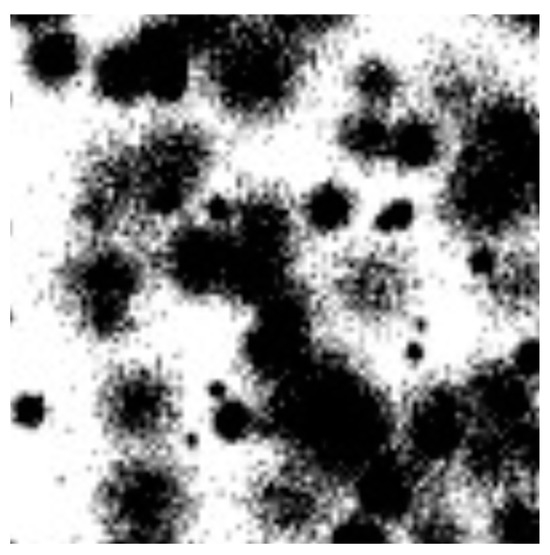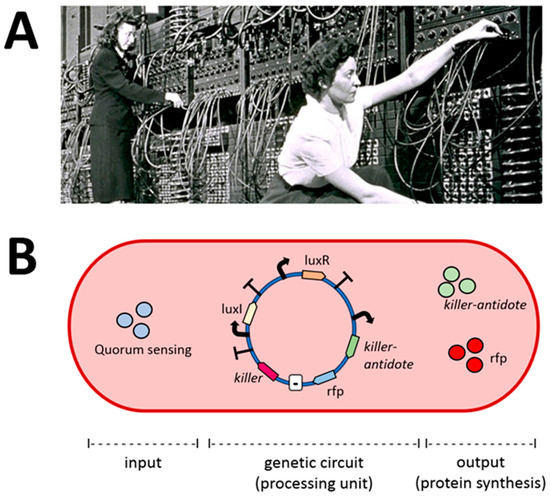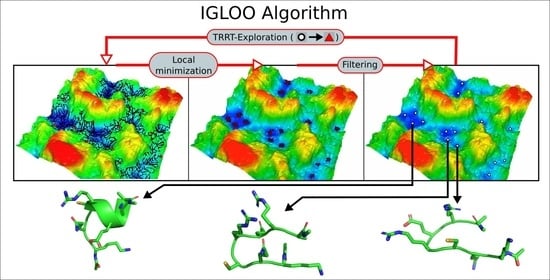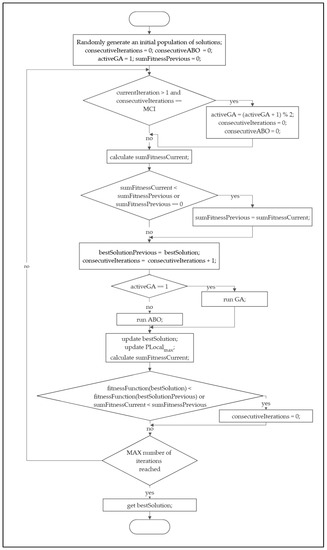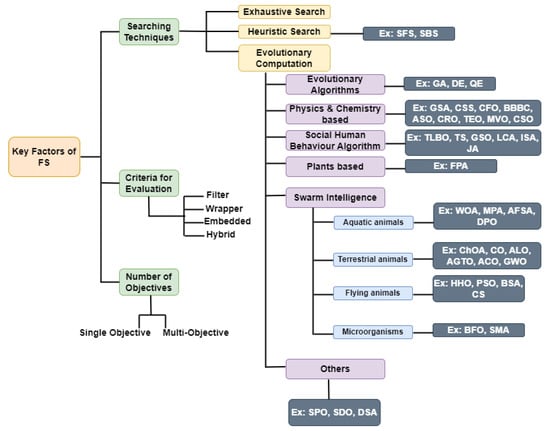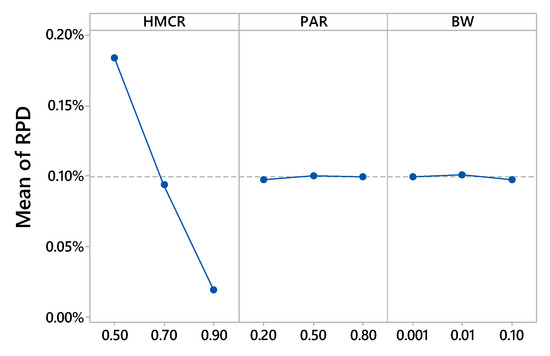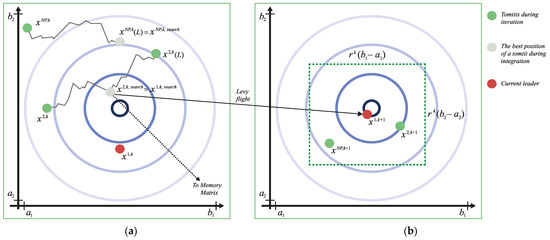Feature Paper in Metaheuristic Algorithms and Applications
Share This Topical Collection
Editor
Topical Collection Information
Dear Colleagues,
Metaheuristic algorithms have been extensively used for solving any kinds of problems in a wide range of fields, such as industrial applications, communications, economics, chemistry, medicine, etc., and they are specifically indicated in complex problems with high computational cost. Furthermore, there is a great variety of different strategies and applications, and every day, new improvements and ideas appear that contribute to enrich their exploitation possibilities in real problems.
We invite you to submit high-quality feature papers to this Topical Collection on “Feature Papers in Metaheuristic Algorithms and Applications”, with subjects covering the whole range from theory to applications. The following is a (non-exhaustive) list of topics of interest:
- Swarm intelligence, such as Artificial Bee Colony, Ant Colony Optimization, Particle Swarm Optimization, etc.;
- Nature-inspired metaheuristic algorithms such as Evolutionary Algorithm, Genetic Algorithm, etc.;
- Neighborhood search algorithms such as Iterated Local Search, Simulated Annealing, Tabu Search, Variable Neighborhood Search, etc.;
- New metaheuristic frameworks/approaches/operators;
- Hybrid evolutionary algorithms;
- Agent-based evolutionary approaches;
- Novel bio-inspired algorithms;
- Empirical and theoretical research of metaheuristics;
- Automatic configuration of metaheuristics.
Prof. Dr. Lorenzo Salas-Morera
Collection Editor
Manuscript Submission Information
Manuscripts should be submitted online at www.mdpi.com by registering and logging in to this website. Once you are registered, click here to go to the submission form. Manuscripts can be submitted until the deadline. All submissions that pass pre-check are peer-reviewed. Accepted papers will be published continuously in the journal (as soon as accepted) and will be listed together on the collection website. Research articles, review articles as well as short communications are invited. For planned papers, a title and short abstract (about 100 words) can be sent to the Editorial Office for announcement on this website.
Submitted manuscripts should not have been published previously, nor be under consideration for publication elsewhere (except conference proceedings papers). All manuscripts are thoroughly refereed through a single-blind peer-review process. A guide for authors and other relevant information for submission of manuscripts is available on the Instructions for Authors page. Algorithms is an international peer-reviewed open access monthly journal published by MDPI.
Please visit the Instructions for Authors page before submitting a manuscript.
The Article Processing Charge (APC) for publication in this open access journal is 1600 CHF (Swiss Francs).
Submitted papers should be well formatted and use good English. Authors may use MDPI's
English editing service prior to publication or during author revisions.
Keywords
- evolutionary algorithms
- facility layout planning
- scheduling problems
- metaheuristics
- interactive algorithms
- bio-inspired algorithms
- swarm intelligence
Published Papers (14 papers)
Open AccessArticle
Crystal Symmetry-Inspired Algorithm for Optimal Design of Contemporary Mono Passivated Emitter and Rear Cell Solar Photovoltaic Modules
by
Ram Ishwar Vais, Kuldeep Sahay, Tirumalasetty Chiranjeevi, Ramesh Devarapalli and Łukasz Knypiński
Viewed by 1025
Abstract
A metaheuristic algorithm named the Crystal Structure Algorithm (CrSA), which is inspired by the symmetric arrangement of atoms, molecules, or ions in crystalline minerals, has been used for the accurate modeling of Mono Passivated Emitter and Rear Cell (PERC) WSMD-545 and CS7L-590 MS
[...] Read more.
A metaheuristic algorithm named the Crystal Structure Algorithm (CrSA), which is inspired by the symmetric arrangement of atoms, molecules, or ions in crystalline minerals, has been used for the accurate modeling of Mono Passivated Emitter and Rear Cell (PERC) WSMD-545 and CS7L-590 MS solar photovoltaic (PV) modules. The suggested algorithm is a concise and parameter-free approach that does not need the identification of any intrinsic parameter during the optimization stage. It is based on crystal structure generation by combining the basis and lattice point. The proposed algorithm is adopted to minimize the sum of the squares of the errors at the maximum power point, as well as the short circuit and open circuit points. Several runs are carried out to examine the
V-
I characteristics of the PV panels under consideration and the nature of the derived parameters. The parameters generated by the proposed technique offer the lowest error over several executions, indicating that it should be implemented in the present scenario. To validate the performance of the proposed approach, convergence curves of Mono PERC WSMD-545 and CS7L-590 MS PV modules obtained using the CrSA are compared with the convergence curves obtained using the recent optimization algorithms (OAs) in the literature. It has been observed that the proposed approach exhibited the fastest rate of convergence on each of the PV panels.
Full article
►▼
Show Figures
Open AccessArticle
Improving Clustering Accuracy of K-Means and Random Swap by an Evolutionary Technique Based on Careful Seeding
by
Libero Nigro and Franco Cicirelli
Cited by 3 | Viewed by 2325
Abstract
K-Means is a “de facto” standard clustering algorithm due to its simplicity and efficiency. K-Means, though, strongly depends on the initialization of the centroids (seeding method) and often gets stuck in a local sub-optimal solution. K-Means, in fact, mainly acts as a local
[...] Read more.
K-Means is a “de facto” standard clustering algorithm due to its simplicity and efficiency. K-Means, though, strongly depends on the initialization of the centroids (seeding method) and often gets stuck in a local sub-optimal solution. K-Means, in fact, mainly acts as a local refiner of the centroids, and it is unable to move centroids all over the data space. Random Swap was defined to go beyond K-Means, and its modus operandi integrates K-Means in a global strategy of centroids management, which can often generate a clustering solution close to the global optimum. This paper proposes an approach which extends both K-Means and Random Swap and improves the clustering accuracy through an evolutionary technique and careful seeding. Two new algorithms are proposed: the Population-Based K-Means (PB-KM) and the Population-Based Random Swap (PB-RS). Both algorithms consist of two steps: first, a population of
candidate solutions is built, and then the candidate centroids are repeatedly recombined toward a final accurate solution. The paper motivates the design of PB-KM and PB-RS, outlines their current implementation in Java based on parallel streams, and demonstrates the achievable clustering accuracy using both synthetic and real-world datasets.
Full article
►▼
Show Figures
Open AccessArticle
Evolutionary Algorithms in a Bacterial Consortium of Synthetic Bacteria
by
Sara Lledó Villaescusa and Rafael Lahoz-Beltra
Viewed by 2225
Abstract
At present, synthetic biology applications are based on the programming of synthetic bacteria with custom-designed genetic circuits through the application of a top-down strategy. These genetic circuits are the programs that implement a certain algorithm, the bacterium being the agent or shell responsible
[...] Read more.
At present, synthetic biology applications are based on the programming of synthetic bacteria with custom-designed genetic circuits through the application of a top-down strategy. These genetic circuits are the programs that implement a certain algorithm, the bacterium being the agent or shell responsible for the execution of the program in a given environment. In this work, we study the possibility that instead of programming synthesized bacteria through a custom-designed genetic circuit, it is the circuit itself which emerges as a result of the evolution simulated through an evolutionary algorithm. This study is conducted by performing in silico experiments in a community composed of synthetic bacteria in which one species or strain behaves as pathogenic bacteria against the rest of the non-pathogenic bacteria that are also part of the bacterial consortium. The goal is the eradication of the pathogenic strain through the evolutionary programming of the agents or synthetic bacteria. The results obtained suggest the plausibility of the evolutionary design of the appropriate genetic circuit resulting from the application of a bottom-up strategy and therefore the experimental feasibility of the evolutionary programming of synthetic bacteria.
Full article
►▼
Show Figures
Open AccessArticle
IGLOO: An Iterative Global Exploration and Local Optimization Algorithm to Find Diverse Low-Energy Conformations of Flexible Molecules
by
William Margerit, Antoine Charpentier, Cathy Maugis-Rabusseau, Johann Christian Schön, Nathalie Tarrat and Juan Cortés
Cited by 3 | Viewed by 2436
Abstract
The exploration of the energy landscape of a chemical system is essential for understanding and predicting its observable properties. In most cases, this is a challenging task due to the high complexity of such landscapes, which often consist of multiple, possibly hierarchical basins
[...] Read more.
The exploration of the energy landscape of a chemical system is essential for understanding and predicting its observable properties. In most cases, this is a challenging task due to the high complexity of such landscapes, which often consist of multiple, possibly hierarchical basins that are difficult to locate and thoroughly explore. In this study, we introduce a novel method, called IGLOO (Iterative Global Exploration and Local Optimization), which aims to achieve a more efficient global exploration of the conformational space compared to existing techniques. The method utilizes a tree-based exploration inspired by the Rapidly exploring Random Tree (RRT) algorithm originating from robotics. IGLOO dynamically adjusts its exploration strategy to both homogeneously scan the landscape and focus on promising regions, avoiding redundant exploration. We evaluated IGLOO using models of two polypeptides and compared its performance to the traditional basin-hopping method and a hybrid method that also incorporates the RRT algorithm. We find that IGLOO outperforms both alternative methods in terms of efficiently and comprehensively exploring the molecular conformational space. This approach can be easily generalized to other chemical systems such as molecules on surfaces or crystalline systems.
Full article
►▼
Show Figures
Open AccessArticle
Enhancing Metaheuristic Optimization: A Novel Nature-Inspired Hybrid Approach Incorporating Selected Pseudorandom Number Generators
by
Marko Gulić and Martina Žuškin
Cited by 4 | Viewed by 1956
Abstract
In this paper, a hybrid nature-inspired metaheuristic algorithm based on the Genetic Algorithm and the African Buffalo Optimization is proposed. The hybrid approach adaptively switches between the Genetic Algorithm and the African Buffalo Optimization during the optimization process, leveraging their respective strengths to
[...] Read more.
In this paper, a hybrid nature-inspired metaheuristic algorithm based on the Genetic Algorithm and the African Buffalo Optimization is proposed. The hybrid approach adaptively switches between the Genetic Algorithm and the African Buffalo Optimization during the optimization process, leveraging their respective strengths to improve performance. To improve randomness, the hybrid approach uses two high-quality pseudorandom number generators—the 64-bit and 32-bit versions of the SIMD-Oriented Fast Mersenne Twister. The effectiveness of the hybrid algorithm is evaluated on the NP-hard Container Relocation Problem, focusing on a test set of restricted Container Relocation Problems with higher complexity. The results show that the hybrid algorithm outperforms the individual Genetic Algorithm and the African Buffalo Optimization, which use standard pseudorandom number generators. The adaptive switch method allows the algorithm to adapt to different optimization problems and mitigate problems such as premature convergence and local optima. Moreover, the importance of pseudorandom number generator selection in metaheuristic algorithms is highlighted, as it directly affects the optimization results. The use of powerful pseudorandom number generators reduces the probability of premature convergence and local optima, leading to better optimization results. Overall, the research demonstrates the potential of hybrid metaheuristic approaches for solving complex optimization problems, which makes them relevant for scientific research and practical applications.
Full article
►▼
Show Figures
Open AccessArticle
An Effective Local Particle Swarm Optimization-Based Algorithm for Solving the School Timetabling Problem
by
Ioannis X. Tassopoulos, Christina A. Iliopoulou, Iosif V. Katsaragakis and Grigorios N. Beligiannis
Cited by 2 | Viewed by 1982
Abstract
This paper deals with the school timetabling problem. The problem was formulated as encountered in a typical Greek high school. A local version of the particle swarm optimization algorithm was developed and applied to the problem at hand. Results on well-established benchmark instances
[...] Read more.
This paper deals with the school timetabling problem. The problem was formulated as encountered in a typical Greek high school. A local version of the particle swarm optimization algorithm was developed and applied to the problem at hand. Results on well-established benchmark instances showed that the proposed algorithm achieved the proven optima provided from an integer programming method presented in earlier research. In almost all cases, the current algorithm beat the integer programming method, either concerning the lower bound yielded or the execution time needed.
Full article
►▼
Show Figures
Open AccessArticle
A Brain Storm and Chaotic Accelerated Particle Swarm Optimization Hybridization
by
Alkmini Michaloglou and Nikolaos L. Tsitsas
Cited by 4 | Viewed by 2381
Abstract
Brain storm optimization (BSO) and particle swarm optimization (PSO) are two popular nature-inspired optimization algorithms, with BSO being the more recently developed one. It has been observed that BSO has an advantage over PSO regarding exploration with a random initialization, while PSO is
[...] Read more.
Brain storm optimization (BSO) and particle swarm optimization (PSO) are two popular nature-inspired optimization algorithms, with BSO being the more recently developed one. It has been observed that BSO has an advantage over PSO regarding exploration with a random initialization, while PSO is more capable at local exploitation if given a predetermined initialization. The two algorithms have also been examined as a hybrid. In this work, the BSO algorithm was hybridized with the chaotic accelerated particle swarm optimization (CAPSO) algorithm in order to investigate how such an approach could serve as an improvement to the stand-alone algorithms. CAPSO is an advantageous variant of APSO, an accelerated, exploitative and minimalistic PSO algorithm. We initialized CAPSO with BSO in order to study the potential benefits from BSO’s initial exploration as well as CAPSO’s exploitation and speed. Seven benchmarking functions were used to compare the algorithms’ behavior. The chosen functions included both unimodal and multimodal benchmarking functions of various complexities and sizes of search areas. The functions were tested for different numbers of dimensions. The results showed that a properly tuned BSO–CAPSO hybrid could be significantly more beneficial over stand-alone BSO, especially with respect to computational time, while it heavily outperformed stand-alone CAPSO in the vast majority of cases.
Full article
►▼
Show Figures
Open AccessReview
Literature Review on Hybrid Evolutionary Approaches for Feature Selection
by
Jayashree Piri, Puspanjali Mohapatra, Raghunath Dey, Biswaranjan Acharya, Vassilis C. Gerogiannis and Andreas Kanavos
Cited by 12 | Viewed by 3828
Abstract
The efficiency and the effectiveness of a machine learning (ML) model are greatly influenced by feature selection (FS), a crucial preprocessing step in machine learning that seeks out the ideal set of characteristics with the maximum accuracy possible. Due to their dominance over
[...] Read more.
The efficiency and the effectiveness of a machine learning (ML) model are greatly influenced by feature selection (FS), a crucial preprocessing step in machine learning that seeks out the ideal set of characteristics with the maximum accuracy possible. Due to their dominance over traditional optimization techniques, researchers are concentrating on a variety of metaheuristic (or evolutionary) algorithms and trying to suggest cutting-edge hybrid techniques to handle FS issues. The use of hybrid metaheuristic approaches for FS has thus been the subject of numerous research works. The purpose of this paper is to critically assess the existing hybrid FS approaches and to give a thorough literature review on the hybridization of different metaheuristic/evolutionary strategies that have been employed for supporting FS. This article reviews pertinent documents on hybrid frameworks that were published in the period from 2009 to 2022 and offers a thorough analysis of the used techniques, classifiers, datasets, applications, assessment metrics, and schemes of hybridization. Additionally, new open research issues and challenges are identified to pinpoint the areas that have to be further explored for additional study.
Full article
►▼
Show Figures
Open AccessArticle
Multi-Guide Set-Based Particle Swarm Optimization for Multi-Objective Portfolio Optimization
by
Kyle Erwin and Andries Engelbrecht
Cited by 11 | Viewed by 2628
Abstract
Portfolio optimization is a multi-objective optimization problem (MOOP) with risk and profit, or some form of the two, as competing objectives. Single-objective portfolio optimization requires a trade-off coefficient to be specified in order to balance the two objectives. Erwin and Engelbrecht proposed a
[...] Read more.
Portfolio optimization is a multi-objective optimization problem (MOOP) with risk and profit, or some form of the two, as competing objectives. Single-objective portfolio optimization requires a trade-off coefficient to be specified in order to balance the two objectives. Erwin and Engelbrecht proposed a set-based approach to single-objective portfolio optimization, namely, set-based particle swarm optimization (SBPSO). SBPSO selects a sub-set of assets that form a search space for a secondary optimization task to optimize the asset weights. The authors found that SBPSO was able to identify good solutions to portfolio optimization problems and noted the benefits of redefining the portfolio optimization problem as a set-based problem. This paper proposes the first multi-objective optimization (MOO) approach to SBPSO, and its performance is investigated for multi-objective portfolio optimization. Alongside this investigation, the performance of multi-guide particle swarm optimization (MGPSO) for multi-objective portfolio optimization is evaluated and the performance of SBPSO for portfolio optimization is compared against multi-objective algorithms. It is shown that SBPSO is as competitive as multi-objective algorithms, albeit with multiple runs. The proposed multi-objective SBPSO, i.e., multi-guide set-based particle swarm optimization (MGSBPSO), performs similarly to other multi-objective algorithms while obtaining a more diverse set of optimal solutions.
Full article
►▼
Show Figures
Open AccessArticle
Hybrid Harmony Search for Stochastic Scheduling of Chemotherapy Outpatient Appointments
by
Roberto Rosario Corsini, Antonio Costa, Sergio Fichera and Vincenzo Parrinello
Cited by 7 | Viewed by 2328
Abstract
This research deals with the same-day chemotherapy outpatient scheduling problem that is recognized as a leading strategy to pursue the objective of reducing patient waiting time. Inspired by a real-world context and different from the other studies, we modeled a multi-stage chemotherapy ward
[...] Read more.
This research deals with the same-day chemotherapy outpatient scheduling problem that is recognized as a leading strategy to pursue the objective of reducing patient waiting time. Inspired by a real-world context and different from the other studies, we modeled a multi-stage chemotherapy ward in which the pharmacy is located away from the treatment area and drugs are delivered in batches. Processes in oncology wards are characterized by several sources of uncertainty that increase the complexity of the problem; thus, a stochastic approach was preferred to study the outpatient scheduling problem. To generate effective appointment schedules, we moved in two directions. First, we adopted a late-start scheduling strategy to reduce the idle times within and among the different stages, namely medical consultation, drug preparation and infusion. Then, since the problem is NP-hard in the strong sense, we developed a hybrid harmony search metaheuristic whose effectiveness was proved through an extended numerical analysis involving another optimization technique from the relevant literature. The outcomes from the numerical experiments confirmed the efficacy of the proposed scheduling model and the hybrid metaheuristic algorithm as well.
Full article
►▼
Show Figures
Open AccessArticle
k-Pareto Optimality-Based Sorting with Maximization of Choice and Its Application to Genetic Optimization
by
Jean Ruppert, Marharyta Aleksandrova and Thomas Engel
Cited by 1 | Viewed by 3181
Abstract
Deterioration of the searchability of Pareto dominance-based, many-objective evolutionary optimization algorithms is a well-known problem. Alternative solutions, such as scalarization-based and indicator-based approaches, have been proposed in the literature. However, Pareto dominance-based algorithms are still widely used. In this paper, we propose to
[...] Read more.
Deterioration of the searchability of Pareto dominance-based, many-objective evolutionary optimization algorithms is a well-known problem. Alternative solutions, such as scalarization-based and indicator-based approaches, have been proposed in the literature. However, Pareto dominance-based algorithms are still widely used. In this paper, we propose to redefine the calculation of Pareto-dominance. Instead of assigning solutions to non-dominated fronts, they are ranked according to the measure of dominating solutions referred to as
k-Pareto optimality. In the case of probability measures, such re-definition results in an elegant and fast approximate procedure. Through experimental results on the many-objective
knapsack problem, we demonstrate the advantages of the proposed approach: (1) the approximate calculation procedure is much faster than the standard sorting by Pareto dominance; (2) it allows for achieving higher hypervolume values for both multi-objective (two objectives) and many-objective (25 objectives) optimization; (3) in the case of many-objective optimization, the increased ability to differentiate between solutions results in a better compared to NSGA-II and NSGA-III. Apart from the numerical improvements, the probabilistic procedure can be considered as a linear extension of multidimentional topological sorting. It produces almost no ties and, as opposed to other popular linear extensions, has an intuitive interpretation.
Full article
►▼
Show Figures
Open AccessArticle
Evolutionary Algorithm-Based Iterated Local Search Hyper-Heuristic for Combinatorial Optimization Problems
by
Stephen A. Adubi, Olufunke O. Oladipupo and Oludayo O. Olugbara
Cited by 6 | Viewed by 3071
Abstract
Hyper-heuristics are widely used for solving numerous complex computational search problems because of their intrinsic capability to generalize across problem domains. The fair-share iterated local search is one of the most successful hyper-heuristics for cross-domain search with outstanding performances on six problem domains.
[...] Read more.
Hyper-heuristics are widely used for solving numerous complex computational search problems because of their intrinsic capability to generalize across problem domains. The fair-share iterated local search is one of the most successful hyper-heuristics for cross-domain search with outstanding performances on six problem domains. However, it has recorded low performances on three supplementary problems, namely knapsack, quadratic assignment, and maximum-cut problems, which undermines its credibility across problem domains. The purpose of this study was to design an evolutionary algorithm-based iterated local search (EA-ILS) hyper-heuristic that applies a novel mutation operator to control the selection of perturbative low-level heuristics in searching for optimal sequences for performance improvement. The algorithm was compared to existing ones in the hyper-heuristics flexible (HyFlex) framework to demonstrate its performance across the problem domains of knapsack, quadratic assignment, and maximum cut. The comparative results have shown that the EA-ILS hyper-heuristic can obtain the best median objective function values on 22 out of 30 instances in the HyFlex framework. Moreover, it has achieved superiority in its generalization capability when compared to the reported top-performing hyper-heuristic algorithms.
Full article
►▼
Show Figures
Open AccessArticle
Domination and Independent Domination in Extended Supergrid Graphs
by
Jong-Shin Chen, Ruo-Wei Hung, Fatemeh Keshavarz-Kohjerdi and Yung-Fa Huang
Cited by 3 | Viewed by 2369
Abstract
Supergrid graphs are derived by computing stitch paths for computerized embroidery machines. In the past, we have studied the Hamiltonian-related properties of supergrid graphs and their subclasses of graphs. In this paper, we propose a generalized graph class for supergrid graphs called extended
[...] Read more.
Supergrid graphs are derived by computing stitch paths for computerized embroidery machines. In the past, we have studied the Hamiltonian-related properties of supergrid graphs and their subclasses of graphs. In this paper, we propose a generalized graph class for supergrid graphs called extended supergrid graphs. Extended supergrid graphs include grid graphs, supergrid graphs, diagonal supergrid graphs, and triangular supergrid graphs as subclasses of graphs. In this paper, we study the problems of domination and independent domination on extended supergrid graphs. A dominating set of a graph is the subset of vertices on it, such that every vertex of the graph is in this set or adjacent to at least a vertex of this set. If any two vertices in a dominating set are not adjacent, this is called an independent dominating set. Domination and independent domination problems find a dominating set and an independent dominating set with the least number of vertices on a graph, respectively. The domination and independent domination set problems on grid graphs are known to be NP-complete, meaning that these two problems on extended supergrid graphs are also NP-complete. However, the complexities of these two problems in other subclasses of graphs remain unknown. In this paper, we first prove that these two problems on diagonal supergrid graphs are NP-complete, then, by a simple extension, we prove that these two problems on supergrid graphs and triangular supergrid graphs are also NP-complete. In addition, these two problems on rectangular supergrid graphs are known to be linearly solvable; however, the complexities of these two problems on rectangular triangular-supergrid graphs remain unknown. This paper provides tight upper bounds on the sizes of the minimum dominating and independent dominating sets for rectangular triangular-supergrid graphs.
Full article
►▼
Show Figures
Open AccessArticle
Application of the Tomtit Flock Metaheuristic Optimization Algorithm to the Optimal Discrete Time Deterministic Dynamical Control Problem
by
Andrei V. Panteleev and Anna A. Kolessa
Cited by 18 | Viewed by 1920
Abstract
A new bio-inspired method for optimizing the objective function on a parallelepiped set of admissible solutions is proposed. It uses a model of the behavior of tomtits during the search for food. This algorithm combines some techniques for finding the extremum of the
[...] Read more.
A new bio-inspired method for optimizing the objective function on a parallelepiped set of admissible solutions is proposed. It uses a model of the behavior of tomtits during the search for food. This algorithm combines some techniques for finding the extremum of the objective function, such as the memory matrix and the Levy flight from the cuckoo algorithm. The trajectories of tomtits are described by the jump-diffusion processes. The algorithm is applied to the classic and nonseparable optimal control problems for deterministic discrete dynamical systems. This type of control problem can often be solved using the discrete maximum principle or more general necessary optimality conditions, and the Bellman’s equation, but sometimes it is extremely difficult or even impossible. For this reason, there is a need to create new methods to solve these problems. The new metaheuristic algorithm makes it possible to obtain solutions of acceptable quality in an acceptable time. The efficiency and analysis of this method are demonstrated by solving a number of optimal deterministic discrete open-loop control problems: nonlinear nonseparable problems (Luus–Tassone and Li–Haimes) and separable problems for linear control dynamical systems.
Full article
►▼
Show Figures






